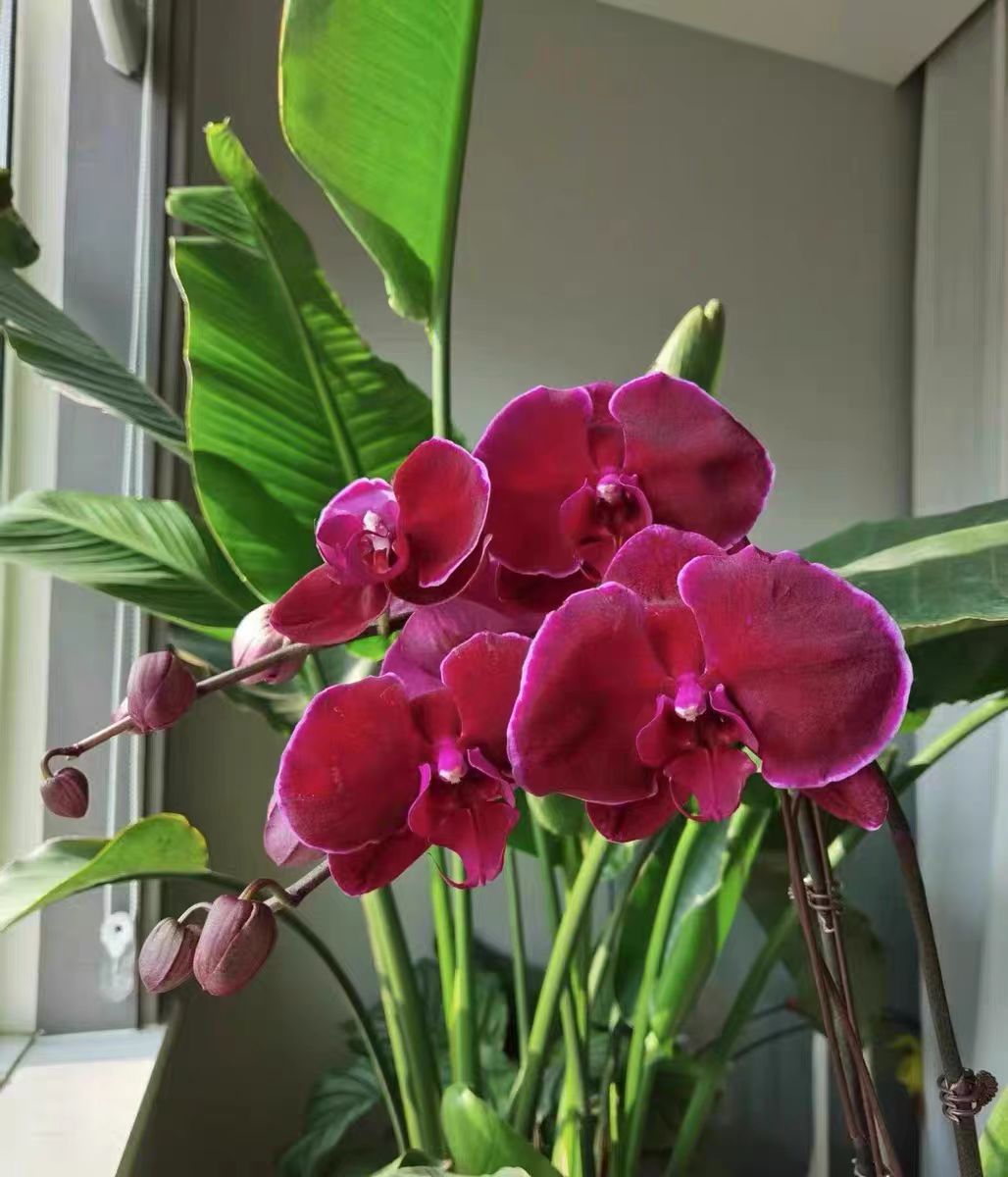When problems such as root rot and aging are found in the roots of a Phalaenopsis orchid, root trimming is a common rescue and maintenance measure. However, after trimming the roots of a Phalaenopsis orchid, can it still be planted? Can it be exposed to sunlight after root trimming? These questions are directly related to the subsequent survival and growth of the Phalaenopsis orchid, and require us to have an in - depth understanding of its maintenance key points.
A Phalaenopsis orchid with freshly trimmed roots can be planted, but the correct method and timing need to be grasped. Root trimming is often due to problems with the roots, such as root rot caused by long - term waterlogging, or the aging roots affecting the plant's absorption of nutrients and water. When trimming, use a disinfected sharp pair of scissors to thoroughly cut off the rotten, blackened, and shriveled roots, and retain the healthy white or light - green roots. After trimming, it cannot be planted directly. Instead, the wound should be treated. The roots of the Phalaenopsis orchid can be soaked in a carbendazim or potassium permanganate solution for 15 - 20 minutes for disinfection and sterilization to prevent the wound from being infected by germs. After disinfection, place the plant in a cool and ventilated place to dry. Plant it after the wound surface is dry and slightly shrunk.
For planting a Phalaenopsis orchid with newly trimmed roots, the choice of substrate is of crucial importance. It is recommended to use sphagnum moss, bark, etc., which have excellent air permeability and water - retention capacity, as the substrate. Sphagnum moss is soft in texture, which can fit the roots and provide a stable humidity environment; bark has strong air permeability, which is beneficial for root respiration. When planting, first lay a layer of substrate at the bottom of the flowerpot, then place the Phalaenopsis orchid in the center of the flowerpot, and gently fill in the substrate to ensure that the roots are in full contact with the substrate. Do not over - squeeze to avoid damaging the roots. After planting, there is no need to water a large amount immediately. Just spray a small amount of water to keep the substrate slightly moist, allowing the Phalaenopsis orchid to germinate new roots in a relatively dry environment.
Regarding whether a Phalaenopsis orchid can be exposed to sunlight after root trimming, the answer is no. After the roots of a Phalaenopsis orchid are trimmed, the roots are damaged, the ability to absorb water and nutrients is weakened, and the whole plant is relatively weak. If it is directly exposed to sunlight at this time, the strong light will accelerate the water evaporation of the plant, and the damaged roots cannot replenish water in a timely manner, which can easily lead to the dehydration and withering of the plant. At the same time, the high temperature generated by the light is not conducive to wound healing, and may also aggravate the growth of germs, causing problems such as root rot. Therefore, the Phalaenopsis orchid after root trimming should be placed in a well - ventilated and bright place without direct light for maintenance, such as 1 - 2 meters away from the window indoors, or on a balcony covered by a sun - shading net.
During the maintenance period after root trimming, in addition to avoiding direct sunlight, the watering frequency also needs to be strictly controlled. Due to the damaged roots, the water absorption capacity is reduced, and excessive watering is likely to cause waterlogging and root rot. Generally, observe the dry - wet condition of the substrate every 3 - 5 days, and water a small amount after the substrate surface is dry and white. In addition, before the new roots grow out, it is not suitable to fertilize to avoid burning the roots due to excessive fertilizer concentration. When the Phalaenopsis orchid grows new white roots and the plant begins to show obvious growth signs, gradually increase the light intensity, transition to normal maintenance management, and appropriately supplement fertilizer to promote the growth of the plant.
As long as the correct planting method and maintenance key points are mastered, a Phalaenopsis orchid with freshly trimmed roots can still come back to life. Avoiding sunlight after root trimming and creating a cool and ventilated recovery environment for the plant are the keys to helping it grow new roots smoothly and resume healthy growth.
Can a Phalaenopsis orchid be planted right after its roots are trimmed?

Share with
Tagged in :




Leave a Reply